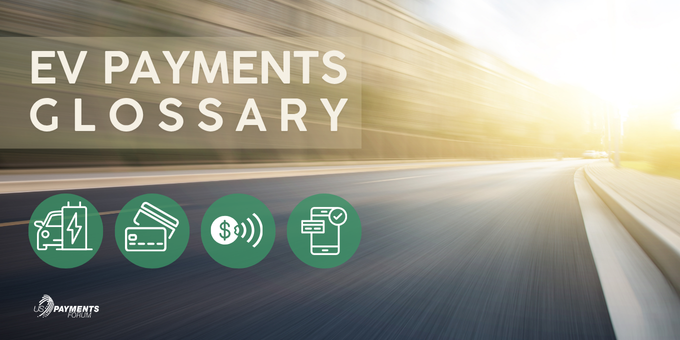Alternating Current (AC) ChargingA type of electric vehicle charging that uses alternating current. Most home and public chargers are AC chargers. They typically provide slower charging when compared to DC chargers.
Amp-hours (Ah)The total amount of electrical charge or energy a battery can hold and deliver. A higher amp-hour rating means that a battery can supply power for a longer duration or can handle a larger electrical load.
Amps (A)The rate of electrical current flow. A higher amp rating means that a device or circuit can handle a greater current flow.
AuthenticationThe process of verifying a user's identity before allowing access to a charging station. Authentication is often done through radio frequence identification (RFID) cards, mobile apps, or Plug & Charge capabilities.
AutochargeA payment method that allows for automatic billing based on the vehicle's unique identifier, streamlining the payment process without requiring manual authentication at each charging session.
Battery Electric Vehicle (BEV)An electric vehicle that is powered solely by an electric battery and has no gasoline engine.
Battery Management System (BMS)A system in electric vehicles that monitors and manages the battery's state of charge, health, and safety.
Billing and SettlementThe processes for calculating the cost of charging sessions and handling payments between customers, charging station operators, and network providers. Protocols like the Open Charge Point Interface (OCPI) facilitate billing and settlement across different networks.
CHAdeMOA direct-current (DC) fast-charging standard developed in Japan, used by some electric vehicles for rapid charging.
Charge Point Operator (CPO)An entity responsible for the operation and maintenance of charging stations. CPOs ensure that stations are functional, accessible, and integrated with various payment and communication protocols. Also known as Charging Station Operator (CSO).
Charging Station The equipment that is used to charge an electric vehicle. The term is sometimes used to refer to a location or site that hosts electric vehicle charging.
Combined Charging System (CCS)A widely used fast-charging standard that combines AC and DC connectors, allowing faster charging speeds via DC current. CCS1 is predominantly used in North America, while CCS2 is the standard in Europe and other regions. The main difference lies in the AC charging connector: CCS1 uses a Type 1 (J1772) connector, while CCS2 uses a Type 2 (Mennekes) connector.
Depot ChargingThe charging of fleet vehicles while they are parked at a company depot. These chargers are either Level 2 or Level 3 and generally operate on a private network.
Direct Current (DC) Fast ChargingA type of charging that provides high power and is capable of charging an electric vehicle much faster than AC charging. DC fast charging is often found at commercial charging stations.
Distribution System Operator (DSO)An interconnected system that maintains an instantaneous balance between supply and demand (generation and load) while moving electricity from generation source to customer.
e-Mobility Service Provider (eMSP)A company that provides services to electric vehicle drivers, such as access to a network of charging stations, billing, and customer support. eMSPs often work with charging station operators to offer seamless services across multiple networks.
Electric Vehicle Supply Equipment (EVSE)Equipment that supplies electric energy for recharging electric vehicles, commonly known as a charging station or charger.
GB/TChina's national standard for EV charging. The standards ensure compatible charging for both AC and DC charging and set the specifications for charging ports, protocols, and safety features.
Home ChargingThe type of charging that occurs at a residence (e.g., home, condominium, apartment complex) Charging at these locations is either Level 1 or Level 2. Home charging can also be used for fleet applications and payments can be remitted to the owner of the residence directly or via the utility supplying the power.
Hub Roaming PlatformCapability that aggregates Charge Point Operators (CPOs), enabling drivers to access and use multiple charging networks through a single account and payment system. See also Roaming.
Hybrid Electric Vehicle (HEV)A vehicle that combines an internal combustion engine (ICE) and an electric motor to power the car, using both gasoline and electricity to power a vehicle.
Idle FeeA charge applied to a vehicle that remains plugged into a charger after it is fully charged. The fee encourages users to move their vehicle when charging is complete.
Internal Combustion Engine (ICE) CarA vehicle with an internal combustion engine.
InteroperabilityThe capability of different electric vehicle charging networks and systems to work together seamlessly. Interoperability is achieved through standardized protocols like the Open Charge Point Protocol (OCPP) and Open Charge Point Interface (OPCI), which ensure that hardware and software from different vendors can communicate effectively.
ISO 15118A standard that defines the communication protocol between electric vehicles and charging stations. The standard supports features like Plug & Charge, enabling secure, automated charging and payment processes without the need for physical cards or apps.
J1772 ConnectorA standard connector for Level 1 and Level 2 (AC only) charging in North America, used by most electric vehicles except Tesla.
Kilowatt (kW)A unit of power equal to 1,000 watts, used to express the power output of chargers and the power consumption of electric vehicles.
Kilowatt-hour (kWh)A unit of energy equivalent to one kilowatt of power used for one hour. It measures the energy capacity of an electric vehicle's battery.
Level 1 ChargingThe slowest form of charging, using a standard household outlet with a voltage of 120 volts. Level 1 charging typically adds about 2 to 5 miles of range per hour.
Level 2 ChargingA form of charging that uses a 240-volt outlet (similar to a clothes dryer or oven outlet) and provides faster charging than Level 1. Level 2 charging adds about 10 to 60 miles of range per hour.
Level 3 ChargingA form of rapid charging using direct current. Level 3 charging adds hundreds of miles of range in 20-30 minutes, depending on the vehicle and charger. Also known as DC Fast Charging.
Megawatt Charging System (MCS)A high-power, DC fast-charging standard designed for heavy-duty electric vehicles like trucks and buses. MCS enables rapid charging, reducing charging times significantly compared to traditional charging methods. MCS can deliver up to 3.75 megawatts (MW) of power, ten times more than some fast-charging systems for passenger cars.
Miles Per Gallon Equivalent (MPGe)The measure of how far a vehicle can travel with electrical energy versus the same amount of energy contained in one gallon of gasoline.
Mobile Payment AppApplications are used on a smartphone to locate, activate, and pay for charging sessions at public charging stations.
Open Charge Point Interface (OCPI)A protocol that facilitates communication between different electric vehicle charging networks. OCPI allows for seamless roaming, enabling electric vehicle drivers to use chargers across various networks with a single account.
Open Charge Point Protocol (OCPP)A universal communication standard between electric vehicle charging stations and central management systems, ensuring interoperability and flexibility for network operators and charging station manufacturers.
Open Payments Electric Vehicle Charging ModelA charging payment model where general-purpose EMV payment credentials (credit, debit, prepaid) are accepted without the need for a dedicated electric vehicle charging card or separate account. This model creates a seamless, secure, universal, and user-friendly driver experience across multiple payment network brands and geographies.
Original Equipment Manufacturer (OEM)A company that produces parts and equipment that may be marketed by another company.
Pay-As-You-Go Model (i.e., “ad hoc” Payments)A charging payment model where users pay per session or per unit of energy consumed without a monthly subscription.
Plug & Charge (ISO 15118)A feature of the ISO 15118 standard that allows for an automated and seamless payment process. When a compatible electric vehicle is plugged into a charging station, the vehicle and station authenticate each other, and billing is handled automatically through a pre-established agreement.
Plug-in Hybrid Electric Vehicle (PHEV)A vehicle that combines a gasoline engine with an electric battery and that can be recharged by plugging into an external source.
PortsThe number of electric vehicles that can be plugged in simultaneously at an electric vehicle charging location.
Post-Pay Model (i.e., “Exact Amount” ModelA payment model where the financial transaction is executed after charging has been completed and any fees have been assessed.
Prepaid Wallet Model (i.e., “Top-up” Model)A payment model where a financial transaction is executed to load a charging app wallet with funds that are then available to support multiple charging activities at various points in time.
Public ChargingCharging networks that are available to anyone with an electric vehicle. Charging speeds are either Level 2 or Level 3. Payments are typically collected using either prepaid, post-pay, or open payments models. Public charging includes on-the-go and enroute charging.
Public Key Infrastructure (PKI)A system that enables secure, automated interactions between electric vehicles, charging stations, and other parties by using digital certificates and cryptographic keys to authenticate and encrypt communications.
Radio Frequency Identification (RFID) CardA card equipped with a radio-frequency identification chip and used to activate a charging session at electric vehicle charging stations.
RangeThe distance an electric vehicle can travel on a single charge, typically measured in miles or kilometers.
Range AnxietyThe fear that a vehicle has insufficient range to reach its destination, especially relevant for electric vehicle users.
Regenerative BrakingA system in electric vehicles that recovers energy that is usually lost during braking and uses it to recharge the battery.
Roaming (i.e., eRoaming)The capability for an electric vehicle driver to use their single e-mobility service provider account to seamlessly access and pay for charging at stations operated by different, otherwise unaffiliated, charge point operators. Also known as Hub Roaming Platform.
State of Charge (SoC)The current level of charge in an electric vehicle's battery, expressed as a percentage of its total capacity.
Subscription ModelA payment model where users pay a recurring fee to access a network of charging stations, often providing discounted rates.
Tap-to-PayA payment method using credit/debit cards, smartphones, or wearable devices equipped with contactless EMV chip technology to pay for charging sessions by tapping the device on a compatible reader. These transactions are secured using EMV specifications and cryptography, ensuring secure and reliable payments.
Tesla SuperchargerTesla's proprietary DC fast-charging network, initially designed for Tesla vehicles. The network is now open to many other electric vehicle auto makers. Tesla Superchargers provide rapid charging upwards of 325kW.
Vehicle-to-Everything (V2X)The bi-directional transfer of electricity between an electric vehicle and other entities, such as the grid, buildings, homes, or other vehicles. V2X technology is defined as a feature under ISO 15118. Essentially, V2X allows electric vehicles to act as both energy consumers and providers. Sub-applications of this technology include Vehicle-to-Grid (V2G), Vehicle-to-Home (V2H), Vehicle-to-Vehicle (V2V), and Vehicle-to-Load (V2L).

